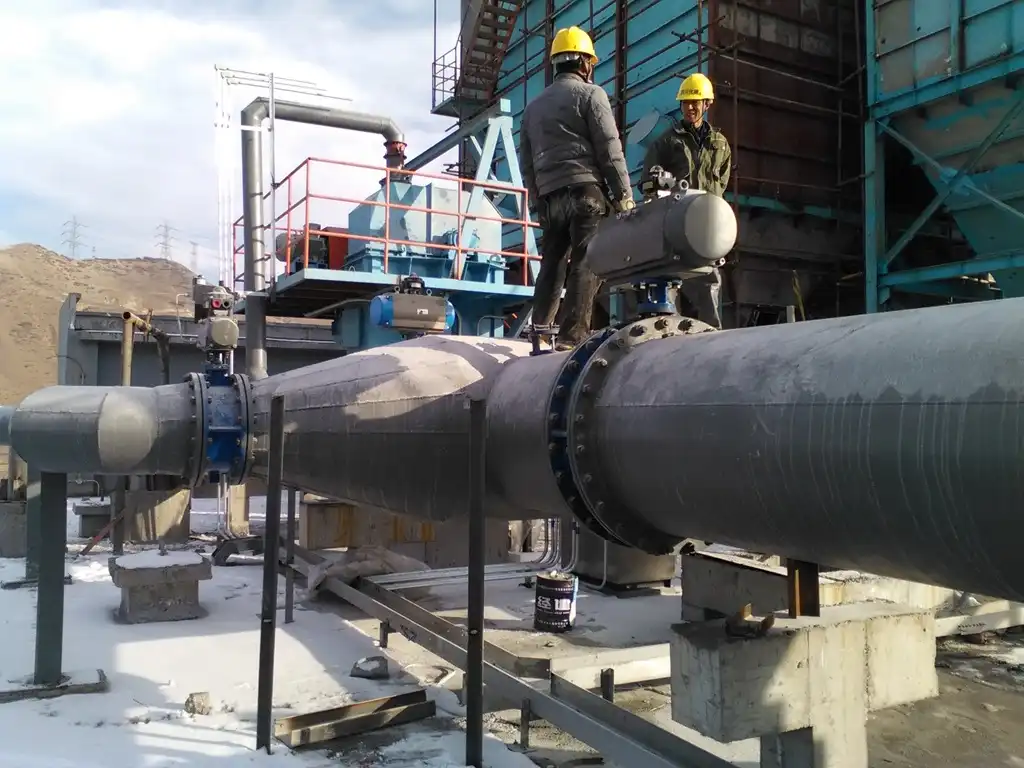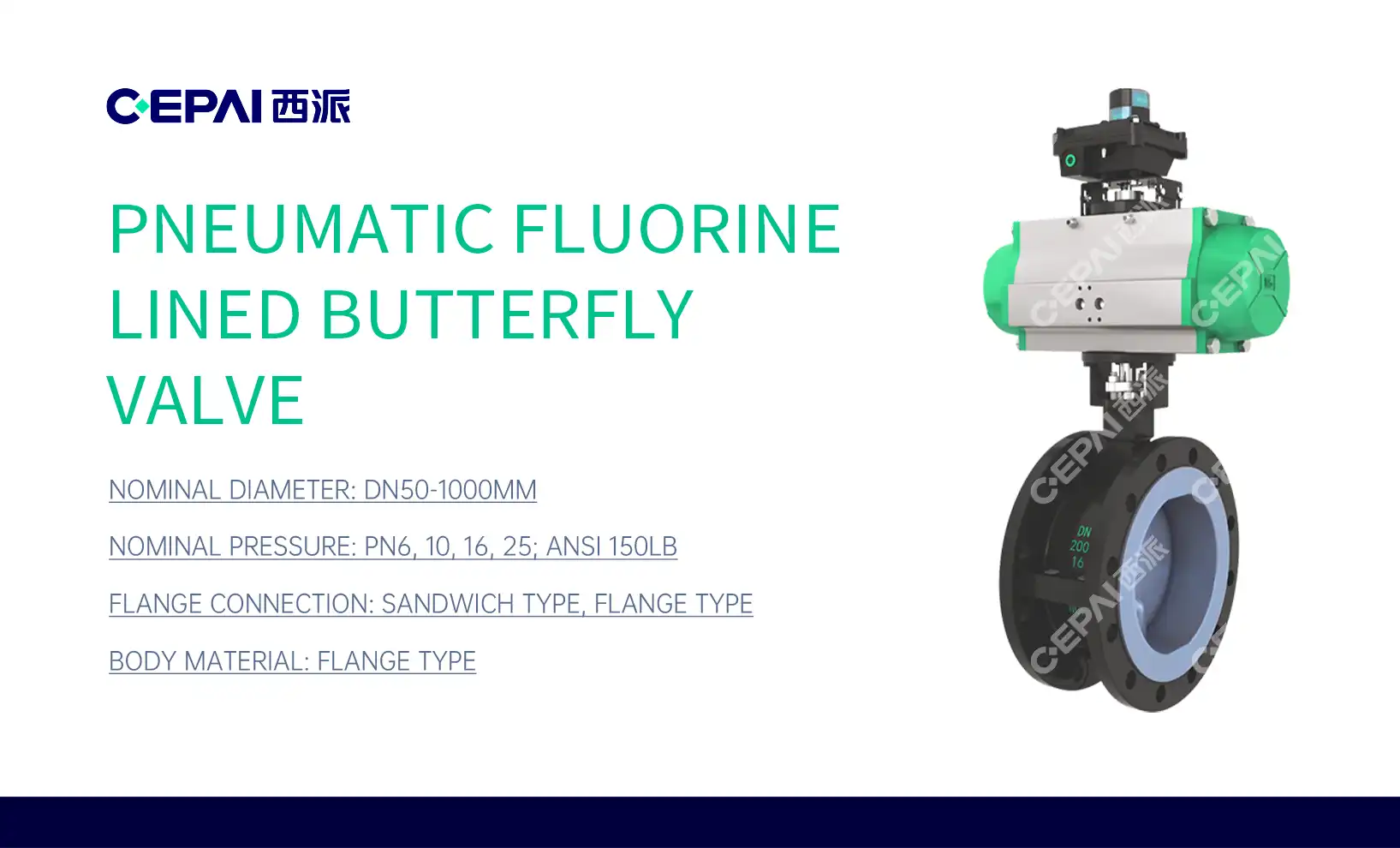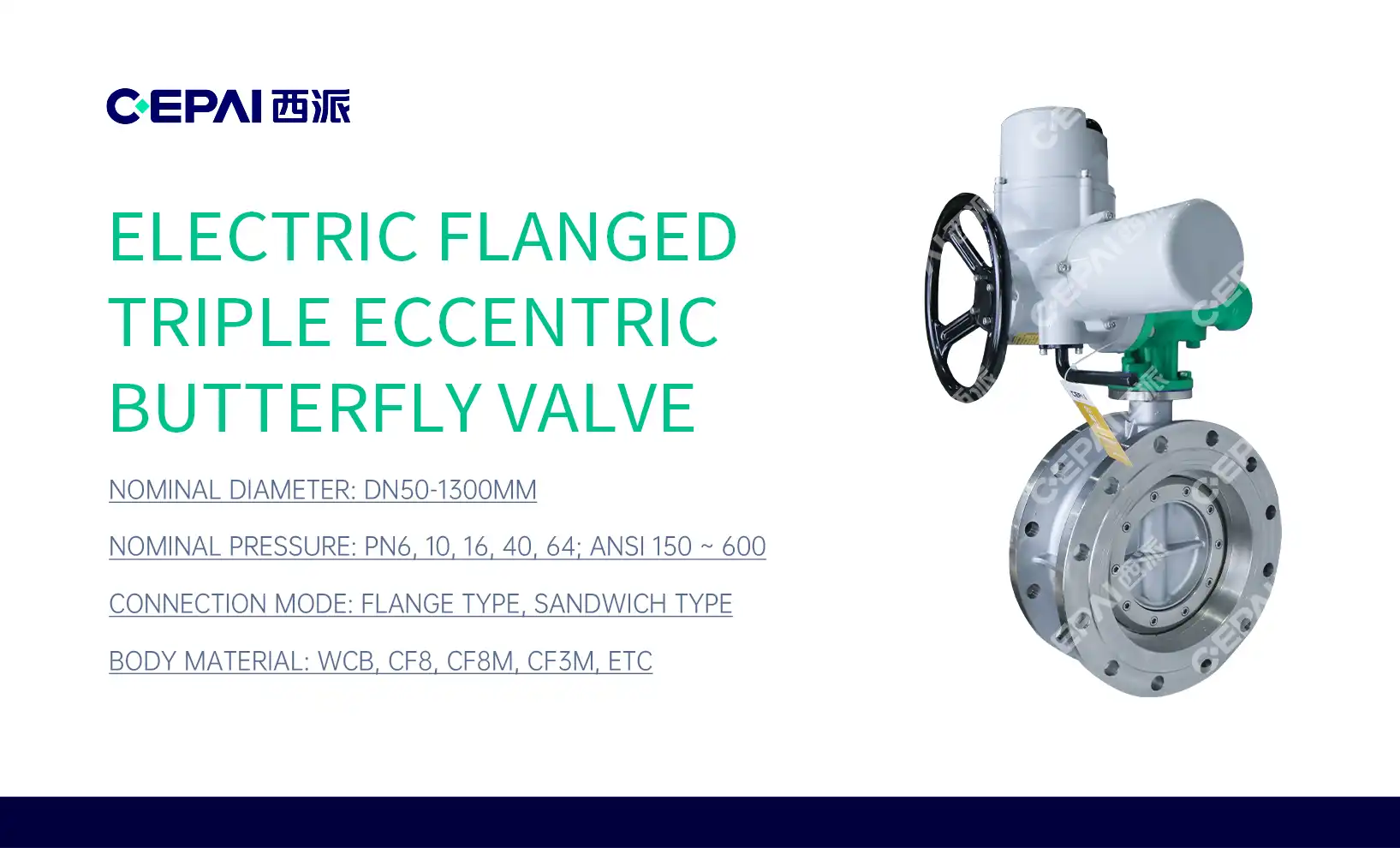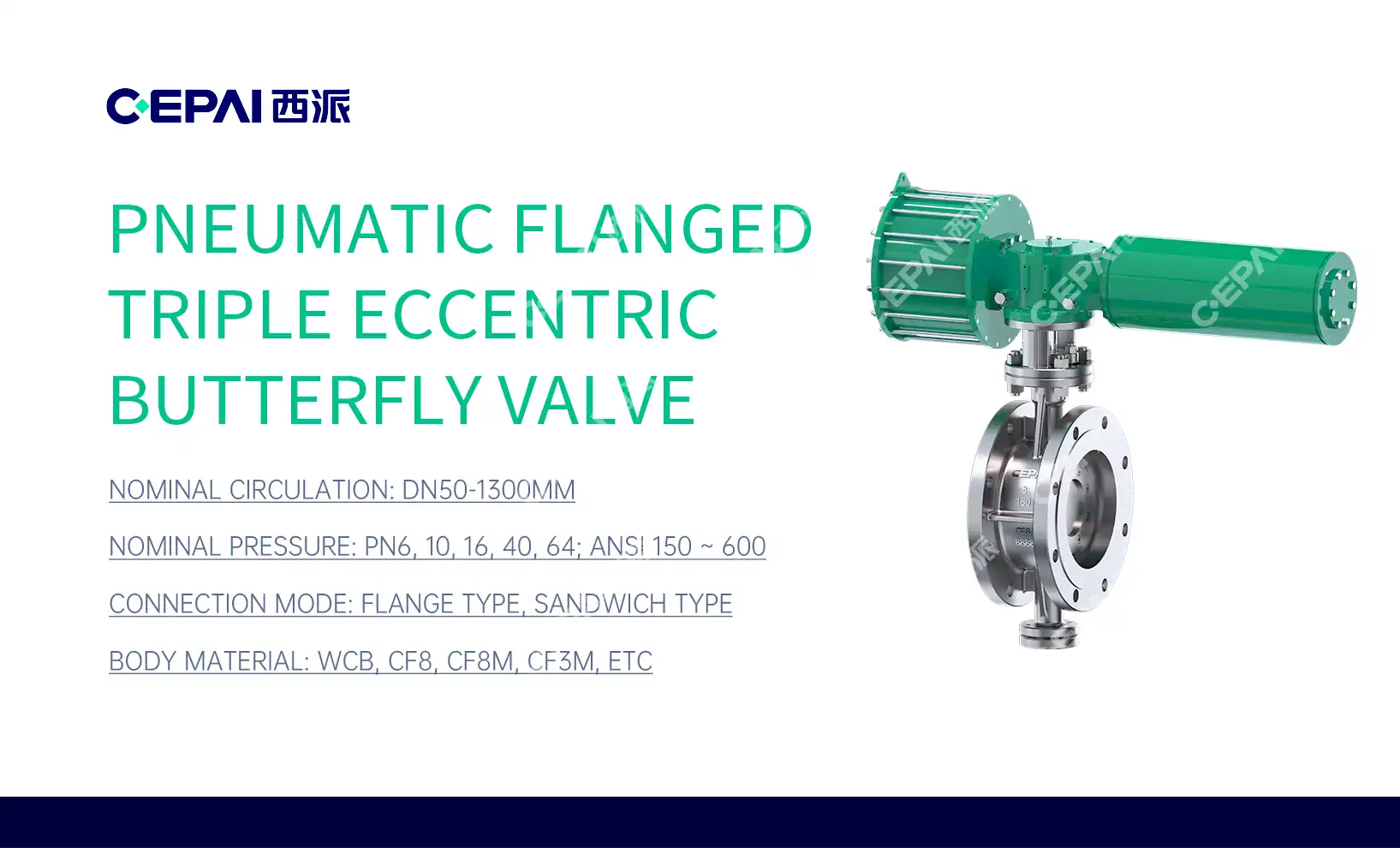Understanding Pneumatic Butterfly Valve Basics
What is a Pneumatic Butterfly Valve?
A pneumatic butterfly valve is a quarter-turn rotary valve that uses compressed air to control the flow of fluids in a pipeline. The valve consists of a disc-shaped element that rotates on a central axis, allowing or restricting flow as it opens or closes. The pneumatic actuator, powered by compressed air, provides the necessary force to operate the valve quickly and efficiently.
Components of a Pneumatic Butterfly Valve
The main components of a pneumatic butterfly valve include the valve body, disc, stem, seat, and pneumatic actuator. The valve body houses the internal parts and connects to the pipeline. The disc is the primary flow control element, rotating to open or close the valve. The stem connects the disc to the actuator, while the seat provides a tight seal when the valve is closed. The pneumatic actuator, typically a diaphragm or piston type, converts air pressure into mechanical motion to operate the valve.
Working Principle of Pneumatic Butterfly Valves
Pneumatic butterfly valves operate on a simple yet effective principle. When compressed air is supplied to the actuator, it creates pressure that moves the actuator's internal mechanism. This movement is transferred to the valve stem, which rotates the disc. As the disc turns, it either allows fluid to flow through the valve or blocks the flow, depending on its position. The air pressure can be adjusted to achieve precise control over the valve's opening and closing, making it suitable for both on-off and modulating applications.
Advantages and Applications of Pneumatic Butterfly Valves
Benefits of Using Pneumatic Butterfly Valves
Pneumatic butterfly valves offer numerous advantages in industrial settings. Their compact design allows for easy installation in tight spaces, while their lightweight construction reduces stress on piping systems. These valves provide rapid operation, making them ideal for quick shut-off or control applications. Additionally, pneumatic actuation allows for remote operation and integration with automated control systems, enhancing overall process efficiency and safety.
Common Applications in Various Industries
The versatility of pneumatic butterfly valves makes them suitable for a wide range of applications across different industries. In the oil and gas sector, they are used for controlling the flow of crude oil, natural gas, and refined products. Water treatment plants employ these valves for regulating water flow and chemical dosing. The chemical processing industry relies on pneumatic butterfly valves for handling corrosive fluids and gases. Other applications include HVAC systems, food and beverage processing, and power generation plants.

Selecting the Right Pneumatic Butterfly Valve
Choosing the appropriate pneumatic butterfly valve requires careful consideration of several factors. These include the type of fluid being handled, operating pressure and temperature ranges, required flow characteristics, and environmental conditions. The valve's materials of construction, such as the body, disc, and seat materials, must be compatible with the process fluid to ensure long-term reliability. Additionally, the actuator size and type should be selected based on the required torque and operating speed to achieve optimal performance.
Maintenance and Troubleshooting of Pneumatic Butterfly Valves
Regular Maintenance Practices
Proper maintenance is crucial for ensuring the longevity and reliability of pneumatic butterfly valves. Regular inspections should be conducted to check for signs of wear, leakage, or damage to valve components. Lubrication of moving parts, such as the stem and actuator, should be performed according to manufacturer recommendations. Periodic cleaning of the valve internals may be necessary to remove buildup or debris that could affect performance. It's also important to verify the integrity of seals and gaskets, replacing them as needed to maintain proper sealing.
Common Issues and Troubleshooting Tips
Despite their robust design, pneumatic butterfly valves may encounter operational issues over time. Common problems include leakage, difficulty in opening or closing, and inconsistent flow control. Leakage can often be addressed by tightening packing glands or replacing worn seals. If the valve is hard to operate, check for obstructions in the disc's path or issues with the actuator's air supply. Inconsistent flow control may be due to worn valve seats or misalignment of the disc, which may require adjustment or replacement of components.
Enhancing Valve Performance and Lifespan
To maximize the performance and lifespan of pneumatic butterfly valves, several strategies can be employed. Implementing a preventive maintenance program helps identify and address potential issues before they lead to valve failure. Using high-quality compressed air, free from moisture and contaminants, can prevent damage to the actuator and internal valve components. Installing strainers or filters upstream of the valve can protect it from debris that could cause wear or obstruction. Regular calibration of valve positioners and controllers ensures accurate and consistent operation in modulating applications.
Conclusion
Pneumatic butterfly valves play a crucial role in modern industrial processes, offering efficient and reliable flow control solutions. Their compact design, quick operation, and versatility make them an excellent choice for a wide range of applications across various industries. By understanding the fundamentals of pneumatic butterfly valves, their advantages, and maintenance requirements, operators can make informed decisions to optimize their processes and ensure long-term reliability. As technology continues to advance, these valves are likely to see further improvements in materials, actuation, and control capabilities, solidifying their position as indispensable components in industrial flow control systems.
Expert Pneumatic Butterfly Valve Solutions | CEPAI
CEPAI Group Co., Ltd. is a leading pneumatic butterfly valves manufacturer and supplier for the energy sector. With years of experience in valve manufacturing, we offer innovative solutions that meet the demanding requirements of oil and gas, chemical processing, and water treatment industries. Our state-of-the-art production facilities and rigorous quality control ensure reliable, efficient, and long-lasting products. For expert advice on selecting the right pneumatic butterfly valve for your application or to discuss your specific needs, contact our team of specialists at cepai@cepai.com.

References
Smith, J. (2022). Pneumatic Valve Technology: Advancements and Applications. Industrial Flow Control Journal, 45(3), 78-92.
Johnson, R. (2021). Maintenance Strategies for Industrial Valves. Plant Engineering Quarterly, 33(2), 112-125.
Brown, A. (2023). Comparative Analysis of Valve Actuators in Process Industries. Chemical Engineering Progress, 119(6), 55-68.
Davis, M. (2022). Materials Selection for Corrosive Environments in Valve Design. Materials Performance, 61(4), 28-35.
Wilson, L. (2023). Energy Efficiency in Industrial Valve Systems. Energy Processing Canada, 65(2), 42-49.
Thompson, K. (2021). Automation Trends in Flow Control: The Rise of Smart Valves. Automation World, 58(9), 72-85.

_1746598531170.webp)



